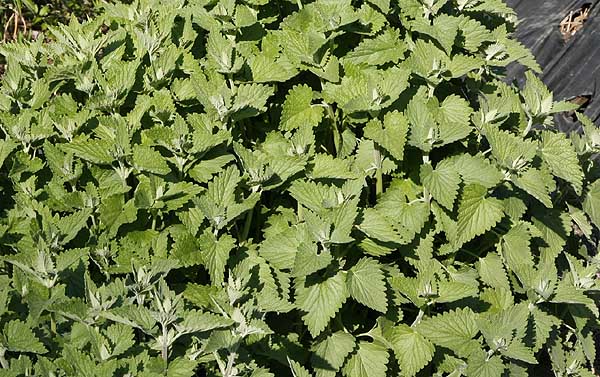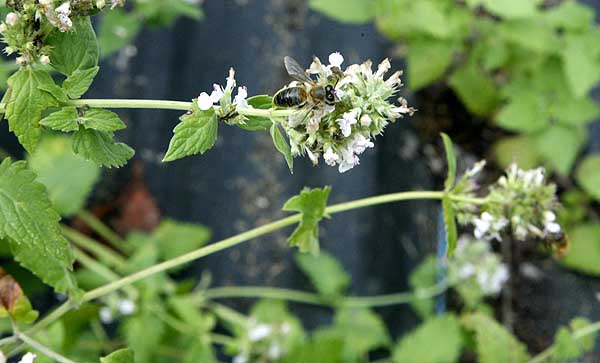TAKING CARE OF YOU CATNIP PLANTS FOR BEST PRODUCTION.
CUTTING BACK YOUR CATNIP PLANTS.
No matter what reason you have to grow catnip cutting back the plants is always a good thing to do unless you live in a very cold zone where is a very short growing season. For those in zones 6 and warmer then cutting plants back will encourage more growth and a regeneration of the cycle discussed above. Catnip plants are very tenacious and will still be producing leaves right up to a killing frost, and if in a sheltered area can often survive with good fresh leaves right up until snowfall. What stage you cut your plants back at will depend on the reason you are growing the plants in the first place but in all cases catnip should be cut back before it seeds or the whole garden will be covered in catnip within two years.
Growing for catnip leaves.
When growing for leaf either for cats or human consumption the plants should be cut back either in late stage 1 or stage 2 at the latest. Cut the plants back almost to the ground, leaving about 3" ( 6.7 cm) of stem. Plants will regenerate and start again at stage one. If harvesting at this stage two harvests can be achieved then plants should be allowed to grow and flower then be cut down before seeding. Alternatively after the second harvest some stalks can be taken but some should be left and allowed to flower. This allows the plant to grow and increase its root stock and produce enough food that it can send to the roots so they can overwinter. If the plant is cut down continuously it will weaken it and it will die. To keep plants health some stems must be allowed to grow and flourish. Cut down when seeds begin to form. The added advantage is that this produces flowers quite late in the summer into fall when many other plants are not flowering. This provides pollinators with much needed sustenance at a time when little else is available. For those in zones 7b and warmer it may be possible to achieve more flushes of young leaves but at some point plants should be allowed to grow and strengthen as constant cutting will eventually weaken them.

Lush Stage 1 catnip leaves
Growing catnip for pollinators.
If the plant is being grown to encourage or increase pollinators then
a different procedure should be followed. First make sure you have several
plants six or more is recommended. Divide the plants into three groups.
Keep groups next to each other don't spread them out. Now we have groups
A, B, C.
Procedure:
- When the plants reach stage 2 cut down groups A and B and harvest
the leaves. Leave group C to grow on.
- When the plants in groups A and B have regenerated cut down group
A and leave B to grow on.
- When group C has flowered and seeds are forming on the top branches
cut the plants down to the ground. The stems will be quite woody by this
time so but it entirely to ground level. This will mean that you are cutting
off some of the flowering side branches but it is essential that the whole
plant is cut down otherwise it will not regenerate.
- Repeat step 3 when groups A and B reach the seeding stage.
- If you have a long growing season repeat steps 1 and 2 as plants grow
up.
Using this process you can generate flowering catnip plants from early to mid summer right up until the frost. This provides the maximum amount of flowers possible later in the season when pollinators are having a harder time finding flowers. By cutting plants back and delaying their flowering time you are providing much needed flowers and nectar at a more crucial time of the year rather than in the midsummer glut.

Pollinators on catnip flowers late fall
Feeding and watering.
To obtain the best possible catnip plants with the best leaves plants will need water. While catnip will grow almost anywhere under almost any conditions it does prefer full sunlight and water with a soil that has good organic material. If grown for pollinators watering twice a week is ideal, for those growing for leaf every other day or even daily depending on your soil type is suggested. Feed plants weekly to help them restore the leaves that are constantly being removed. Good feeding and care gives strong plants.
OTHER CATNIP INFORMATION
How to choose which catnip to buy.
Taking Care of Catnip Plants for best Production
Questions about Catnip products
How Floral Encounters Produces Catnip.
| Janice Hazeldine PhD is the owner and head grower of Floral Encounters an organic Medicinal Herb farm that is also a designated sanctuary for pollinators. |





